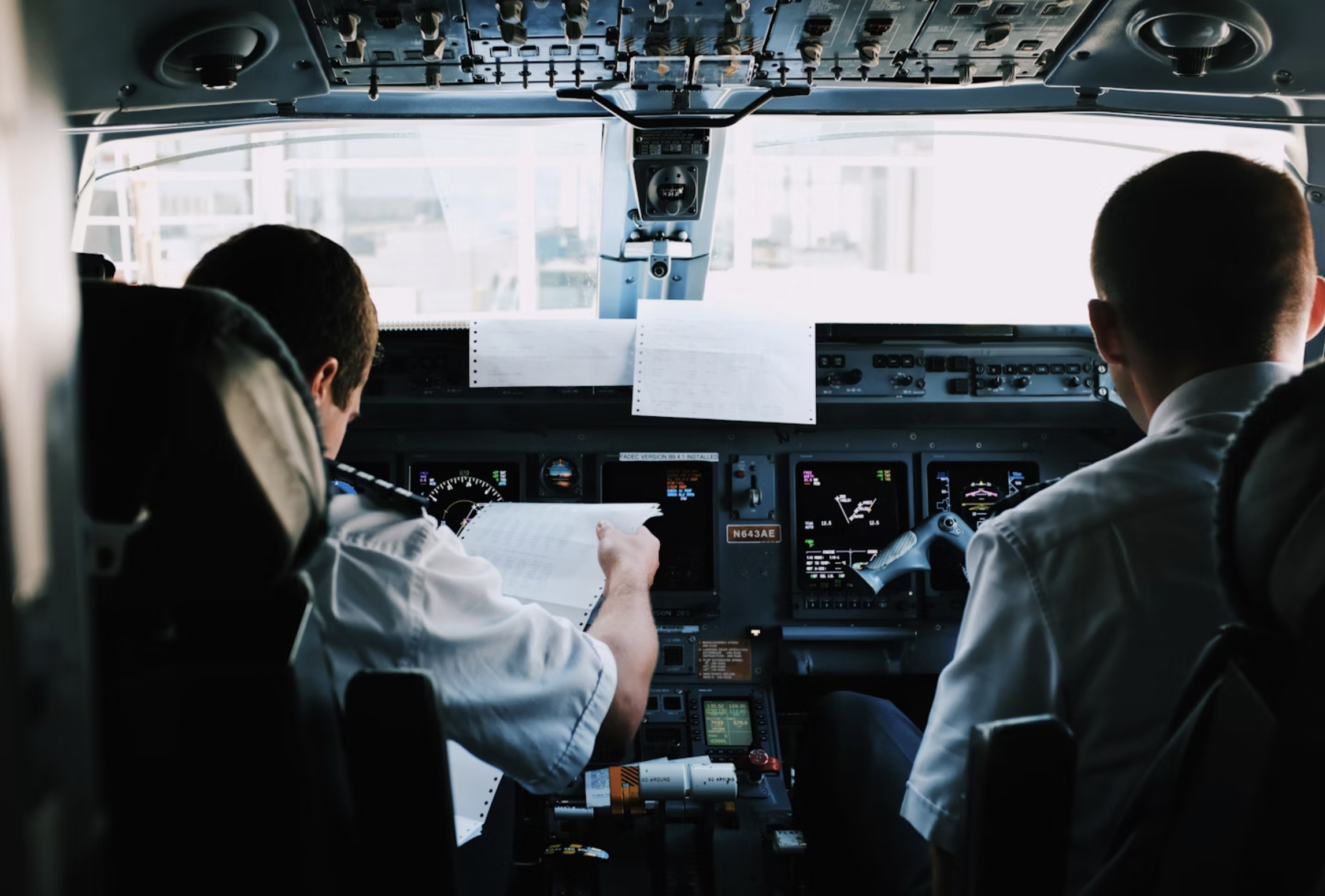Flight schools prepare new pilots for check rides, cross-country navigation, and weather analysis, but there is another layer of learning that rarely appears in the syllabus. It is the awareness of risks that accumulate quietly in the background.
You might read statistics about how walking down the street is ‘more dangerous’ than being a pilot. However, it’s clear, especially with recent trends, that aviation risks are far more devastating and frankly, scary. According to Jan-Arwed Richter, founder of an aviation safety consulting firm, the number of civil aviation fatalities in 2025 is over 460. This is way over the average of the last decade (284).

The reality is that vigilance from the very first hours of flying sets the foundation for long-term safety. This article is not about fear, but about sharpening the lens through which new aviators view their environment.
#1. Fatigue and Cognitive Load
Most student pilots assume that fatigue is solved by sleeping well before a flight. The truth is that flying drains energy in ways that are not always obvious. Hours of constant decision-making, checking gauges, communicating with ATC, and anticipating the next move build up a mental load that can leave a pilot just as impaired as a lack of sleep.
According to the European Transport Safety Council, 76% of pilots had experienced microsleeps while on duty. Moreover, 73% said they did not have enough rest in between their shifts.
Likewise, another overlooked aspect is the lifestyle of trainees. Many juggle work, academics, and flying lessons. This creates small but continuous strains on concentration. By the time they take off, their attention span is already reduced. Unlike professional airline pilots, trainees are not covered by strict duty hour regulations, which means fatigue management is left entirely up to them.
A useful practice is post-flight journaling. Writing down what went well and what caused stress helps offload mental clutter, freeing space for the next lesson. Treating the mind like an engine that requires cool-down time and maintenance can prevent subtle fatigue from creeping into performance. Fatigue may not show up on a checklist, but it shapes every choice a pilot makes.
#2. Toxic Chemical Exposure
Airports are filled with chemicals that quietly influence health over time. Pilots focus on weather, engines, and navigation, but the environment on the ground can carry risks just as real as turbulence in the air.
Breathing in jet exhaust while waiting on a ramp, standing near running APUs, are all health risks. Even spending long hours in maintenance hangars exposes pilots to substances that do not disappear once the day’s lesson is over.
One of the more concerning examples is AFFF, the firefighting foam that is widely used in airports. It was developed to control jet fuel fires quickly, but years later, the health consequences of repeated exposure became clearer. According to TorHoerman Law, the cancer risks have been significant for military veterans who were exposed to it on air bases or during fire drills.
Many veterans have already filed VA claims for exposure to AFFF, showing how this risk moved from the background into a national conversation. For new pilots, awareness is the first step in prevention.
What’s alarming is the fact that these chemicals are being detected in alarming amounts in airports all over the world. Earlier this year, sewers at the Brunswick Executive Airport reported PFAS levels at over 4,000 PPT (parts per trillion). Likewise, in England, high levels of toxic chemicals were detected at over 17 airports.
While there’s not much you may be able to do to address this, you can take simple steps every day to avoid exposure. For instance, limiting unnecessary time in poorly ventilated hangars and avoiding showering or drinking water from airport facilities.
#3. Complacency in “Simple” Conditions
Pilots train to handle crosswinds, engine failures, and instrument approaches, yet many accidents happen when skies are clear and winds are calm. The reason is complacency. Good weather tricks the brain into believing the flight is routine, which is when shortcuts start to appear. A missed checklist item, a sloppy fuel calculation, or ignoring a small crosswind suddenly matters when conditions shift unexpectedly.
For new pilots, complacency can appear after the first handful of solo flights. Confidence rises, which is a good thing, but confidence without discipline becomes a risk. Flight schools often emphasize emergencies, but the discipline of treating ordinary flights with the same seriousness separates pilots who remain safe over the long haul.
One practical strategy is creating personal minimums that are stricter than the FAA’s requirements. For example, always landing with at least ninety minutes of fuel, or refusing to fly when crosswinds exceed half your demonstrated capability. Likewise, it’s also worth remembering that collisions also happen on the ground.
According to Timothy L. Arel, COO, Air Traffic Organization, there were over 1,756 runway incursions in 2023, with 60% being caused by pilot deviations. Thankfully, the majority of these incidents were controlled to avoid collisions (23). However, it’s a clear reminder that the routine rules are critical to obey on the ground just as much as they are in the sky.
Frequently Asked Questions
1. What is the accident rate for pilots?
Accident rates are usually measured per 100,000 flight hours. In U.S. general aviation, it’s roughly 4–5 accidents per 100,000 hours, while commercial airline operations are far lower. Airlines fly millions of hours yearly, so statistically, accidents are extremely rare events.
2. Which airline has the worst accident record?
There isn’t a simple “worst” airline, since accident records depend on region, time frame, and how safety data is tracked. Major U.S. and European airlines haven’t had fatal crashes in decades. Smaller regional or developing-world carriers generally show higher accident histories.
3. What are the rules for pilot fatigue?
Airline pilots in the U.S. follow FAA Part 117 rules. These limit duty periods to 9–14 hours depending on start time, require at least 10 hours of rest with 8 uninterrupted hours for sleep, and mandate weekly and monthly caps on flight hours.
Ultimately, for new pilots, the real challenge is building awareness before bad habits settle in. Fatigue, chemical exposure, and complacency may not appear dramatic at first, yet they shape both safety and longevity in aviation.
The key takeaway here is that developing vigilance early creates a mindset that will serve throughout a flying career.
3 Risk Factors Every New Pilot Should Be More Vigilant About » CLEAR Introduces eGates at Major Airports, Biometric Scanning » EVA Air Teases Southwest Partnership, New U.S. Route »
Comments (0)
Add Your Comment
SHARE
TAGS
INFORMATIONAL Travel Pilots New Pilots Tips Risk FactorsRECENTLY PUBLISHED
 CLEAR Introduces eGates at Major Airports, Biometric Scanning
On August 19th, CLEAR launched its eGates, which allow CLEAR+ members to bypass any security checkpoint lines and proceed directly to bag screening.
NEWS
READ MORE »
CLEAR Introduces eGates at Major Airports, Biometric Scanning
On August 19th, CLEAR launched its eGates, which allow CLEAR+ members to bypass any security checkpoint lines and proceed directly to bag screening.
NEWS
READ MORE »
 3 Risk Factors Every New Pilot Should Be More Vigilant About
Flight schools prepare new pilots for check rides, cross-country navigation, and weather analysis, but there is another layer of learning that rarely appears in the syllabus. It is the awareness of risks that accumulate quietly in the background.
INFORMATIONAL
READ MORE »
3 Risk Factors Every New Pilot Should Be More Vigilant About
Flight schools prepare new pilots for check rides, cross-country navigation, and weather analysis, but there is another layer of learning that rarely appears in the syllabus. It is the awareness of risks that accumulate quietly in the background.
INFORMATIONAL
READ MORE »
 EVA Air Teases Southwest Partnership, New U.S. Route
In a series of posts on social media, EVA Air revealed its plan for a new airline partner in the United States, along with hinting at expansion to a new destination. The Taiwan-based carrier posted a graphic announcing a new connection airline with a tail that mirrors Southwest Heart livery.
NEWS
READ MORE »
EVA Air Teases Southwest Partnership, New U.S. Route
In a series of posts on social media, EVA Air revealed its plan for a new airline partner in the United States, along with hinting at expansion to a new destination. The Taiwan-based carrier posted a graphic announcing a new connection airline with a tail that mirrors Southwest Heart livery.
NEWS
READ MORE »


